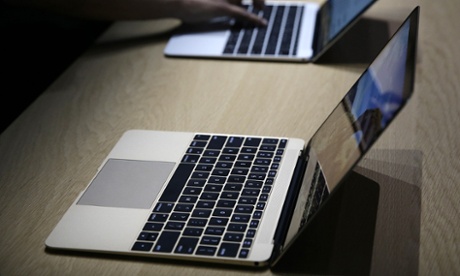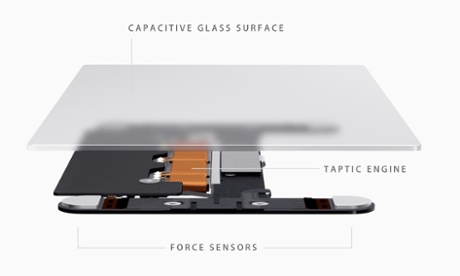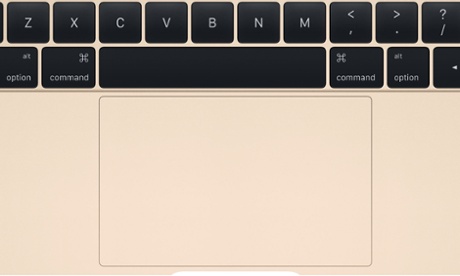
Apple’s new super-thin MacBook comes with a new trackpad technology that detects the force of a tap or press and is expected to be added to the iPhone next year. But what is “force touch”, how does it work and what on earth is a “taptic engine”?
Beyond the hype and buzz around the Apple Watch launch on Monday evening, a piece of technology that could change the way we interact with our computers and smartphones was unveiled. But it wasn’t a wearable device, nor a new phone. It was a new laptop fitted with a new type of trackpad.
Trackpads are not usually an exciting part of a computer. They are just a touch mouse with a couple of buttons and while some work better than others, they are pretty mundane. But Apple’s new trackpad on the 13.1mm thick MacBook does something different.
Instead of having either physical buttons or the whole trackpad acting as one giant button as in previous Apple laptops, the force touch trackpad does not move. Underneath the four corners of the pad are force sensors, which detect clicks as well as force and mean a click can be made anywhere on the trackpad - not just at the bottom.
Press harder

The new sensors can detect more than one type of click. A light click can perform one action, a harder click another and the threshold of how hard is a “hard” press can be customised.
Press harder to speed up the fast forward of video, for instance, or “force click” to pull up a definition of selected word.
The force gestures are in addition to the standard multitouch trackpad swipes and taps and are intuitive, which bodes well. Apple is expected to integrate force sensing into its iPhone and iPad next year, after introducing the technology in the company’s smartwatch, according to the Wall Street Journal.
The trackpad taps back

The new trackpad also incorporates a new type of haptic feedback – a physical response to a virtual action typically on a touchscreen. In this case Apple has replaced the physical depression of a trackpad click with what it calls a “taptic engine”.
A small device attached to the back of the trackpad essentially taps back in the opposite direction to the user’s click. It simulates physical movement, tricking the brain into thinking the trackpad is moving down and clicking as a button would. But the feedback is not just one stage, and with each threshold of force applied to the trackpad another click is felt.
The whole experience is much like using a two-stage camera shutter button that clicks once to focus and depresses further to capture the shot.
Most haptic feedback until now, as felt on Android and Windows Phones among others, is created by small vibration motors. When a virtual key is pressed the smartphone buzzes.
The new tapping feedback, which is also used by the Apple Watch, is a more intuitive and natural response to virtual taps and potentially represents a big step forward in haptic feedback.
Integrated into smartphones and tablets a force-sensing touchscreen that taps back on the user could provide virtual keyboards with feedback that is intuitive enough to level the playing field with physical keyboards, which would be good news for tablets and the “post-PC” era.
• Half the UK population will use a tablet in 2015 – but future growth will be slow







